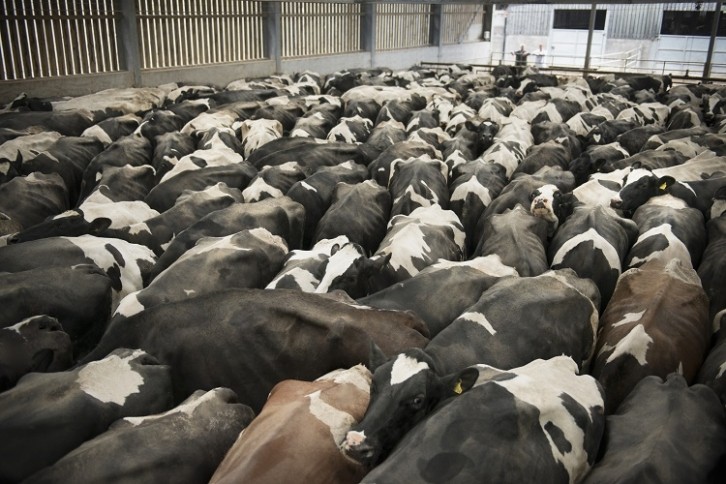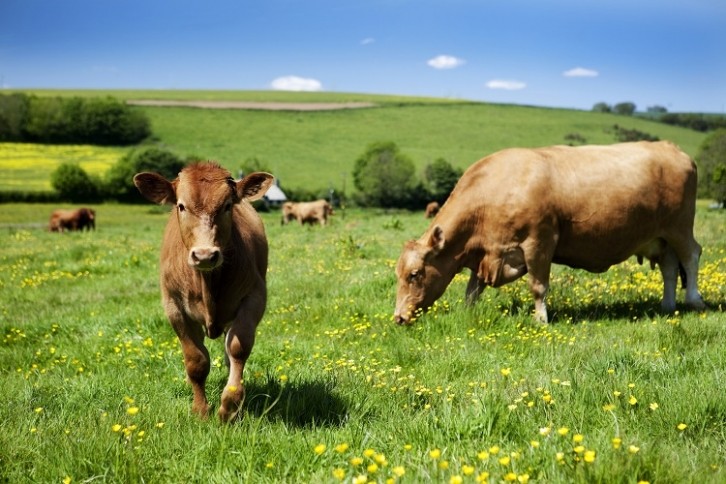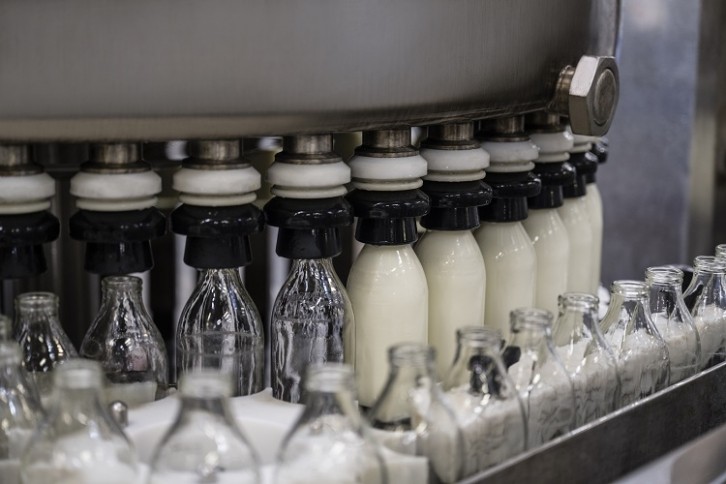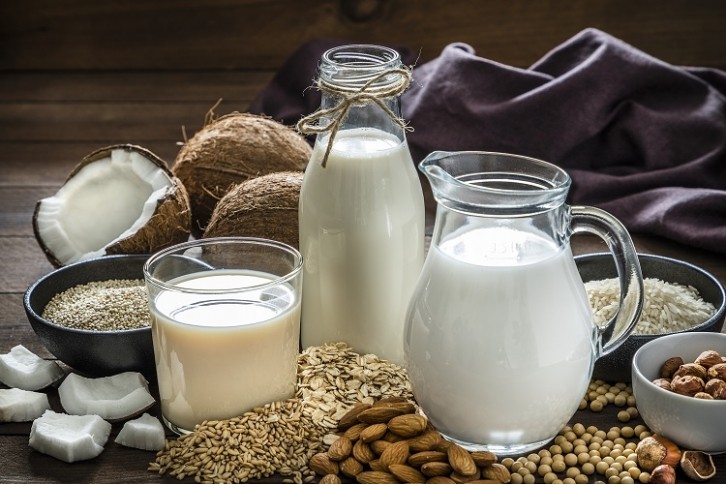Dairy merchandise resembling milk, butter, cream and cheese have been eaten for lots of of years and are thought of important buying gadgets for a lot of. Moreover, the EU dairy sector is the second largest agricultural sector within the EU, representing greater than 12% of whole agricultural output.
Nevertheless, latest many years have seen a decline in demand for dairy merchandise, notably cow’s milk, with the Defra Household Meals Survey displaying that the common consumption of cow’s milk dropped by practically 50% within the UK since 1974.
Equally, a research carried out by the US Division of Agriculture (USDA), discovered that consumption of milk within the US has decreased over every of the previous seven many years, falling at its quickest price within the 2010s. In 2019 it was right down to 0.49 cups per individual per day from 0.96 cups per individual per day in 1970.
So what facets of the dairy business are regarding customers and what can the dairy business do to win these customers again?
Animal welfare and the dairy business
Shopper consciousness of animal welfare within the dairy business has been highlighted as one of many main causes for a lot of to decide on dairy options.
In line with market intelligence company Mintel, 57% of individuals surveyed cited “animal welfare issues concerning dairy farmers” as their cause for switching from dairy merchandise. Furthermore, a survey carried out by the European Fee discovered that 84% of Europeans consider that the welfare of all farmed animals needs to be higher protected of their nation than it’s now.
“Good animal welfare is determined by three elements: bodily well-being, psychological well-being, and pure residing,” Olga Kikou, head of animal welfare charity Compassion in World Farming (CIWF) EU, informed FoodNavigator. “In intensive dairy farms, all three of those are compromised by intervals of confinement in indoor housing, well being issues attributable to greater milk yields and misery brought on by early separation from their calves. Compelled greater milk yields trigger mastitis, lameness, weight reduction, poor physique situation and infertility. These in flip trigger the cows to be killed after just a few years regardless of having a pure life span of round 20 years. Insufficient housing (poor air flow, concrete flooring, crowded circumstances) and “zero-grazing” methods additionally exacerbate these and different well being points.”
Nevertheless, circumstances are bettering and rules throughout Europe are serving to to make sure the welfare of the cows.
“Natural requirements within the EU make sure that dairy cows have entry to pasture throughout the grazing season and that cows are fed a extra pure food plan with loads of roughage, which is sweet for his or her digestive well being. They encourage higher welfare and breeding in dairy cattle to cut back issues like lameness, mastitis and poor fertility,” explains Kikou. “Soil Affiliation natural requirements moreover ban the sale of calves beneath one month previous for export, or their sale at market beneath 12 weeks previous (except they’re with their mom).
It’s additionally essential to recognise that many farmers are already prioritising animal welfare of their manufacturing processes.
Farms resembling Outdated Corridor Farm in Norfolk, England, for instance, places the well being of their cows and calves first.
“Our cows maintain their calves for 9-12 months, which ensures a really excessive degree of cow happiness and well being,” Rebecca Meyhew of Outdated Corridor Farm informed FoodNavigator. “We’re considered one of only a few dairies within the UK that do that, however it’s a rising motion. Our cows are allowed entry to pasture day by day when the climate permits, and whether it is too moist for them to exit, they’ve pretty deep straw beds to sleep on not cubicles. Being a straw primarily based system signifies that there is no such thing as a slurry which is healthier for the atmosphere, the soil and the cows. They’re raised on multi species pasture, not simply grass, which signifies that they’ve entry to an enormous number of plant species. That is useful to their intestine well being and signifies that they will self-medicate from our pastures and hedges which ends up in decrease worm counts, and higher total well being. Herbs and legumes within the pasture additionally make it extra satisfying to them, and they’re happier due to that. We don’t feed silage – it is rather acidic and damages the cows delicate rumen – we feed hay and haylage, which has extra fibre, while nonetheless being a wonderful supply of power for milk manufacturing.
“Our cows have their first calf between 2.5 and three years of age on common. We consider in letting them mature earlier than they’re pushed to having calves. Our lactation is roughly 18 months, which implies the cow is just calving each 18 months to 2 years, somewhat than each 12 months, placing much less pressure on their our bodies.
“On account of every part that we do, our cows dwell longer lives – most dairy cows within the UK have not more than 3 lactations (I consider that the common is 2.5) which implies cows are culled earlier than they’re 5 years previous. Our cows vary in age from 3-14. This positively reveals massively improved animal welfare outcomes.”
What extra can governments do to enhance animal welfare in dairy farming?
More durable rules enforced by the EU and non-EU governments throughout Europe would probably have a optimistic influence on dairy consumption as customers can be reassured within the welfare of the animals producing these dairy merchandise.
“As the most important milk producer with about 20 million dairy cows, the European Union should scale up its efforts to make sure greater welfare for dairy cows,” says CIWF’s Kikou. So what facets of intensive dairy farming require probably the most pressing consideration?
“As a precedence, particular person calf pens have to be banned and calves, if they’re to be faraway from their mom, have to be saved in pairs at a minimal. Entry to pasture for grazing needs to be required for a minimal interval of 120 days annually, breeding for ultra-high milk manufacturing ought to finish, and as a substitute cows needs to be bred that produce reasonable portions, thus lowering the well being and welfare issues this causes and likewise enabling them to acquire enough power from their pure food plan of grazing. Regardless of the European Meals Security Authority’s (EFSA) 2023 opinion that frequent practices in dairy farms resembling completely tying cows in stalls are dangerous to their welfare, the European Fee has didn’t current the long-awaited legislative revision to ascertain greater welfare requirements. We welcome EFSA’s suggestion for entry to pastures, thick bedding materials and brushes to assist cows keep clear and comfy, in addition to an indoor space of a minimal of 9 m² per cow.”
Kikou goes on to clarify that present laws just isn’t at the moment being successfully enforced which means that further laws is considerably tougher to implement, saying that, “one other subject getting in the best way of reaching greater welfare for dairy cows throughout the EU is the shortage of compliance with the prevailing, but restricted laws on the a part of many Member States.”
The environmental influence of the dairy business
Meals manufacturing is without doubt one of the single largest contributors in direction of local weather change, with the most important portion of food-related greenhouse gases coming from agriculture and land use. The dairy business, specifically, is dangerous to the atmosphere by methane emissions from cattle, elevated ranges of carbon dioxide emissions from deforestation for grazing land, the refrigeration and transport of dairy merchandise, industrial processes such because the manufacturing of paper and plastic for packaging, and the administration of waste.
In line with Our World in Information, cow’s milk has a considerably greater environmental influence than the plant-based options.
“If you wish to scale back the environmental footprint of your food plan, switching to plant-based options is an efficient choice,” says Hannah Ritchie of Our World in Information.
On account of this, many customers are avoiding the consumption of dairy merchandise and switching to plant-based options, within the hopes of lowering their very own carbon footprint. In actual fact, a survey carried out by Mintel survey discovered that 49% of customers aged 18 years and over, apprehensive in regards to the environmental influence of dairy manufacturing.
Nevertheless, as with animal welfare, many farmers are engaged on creating and sustaining sustainable farming practices to assist to guard the atmosphere.
Nortons Farm in England has developed a blended farming system, which means that it retains livestock and arable crops. Blended farming produces a spread of advantages, such because the manure from the animals getting used as a soil conditioner and enhancer, and offering a helpful supply of nitrogen that’s important for wholesome crop progress. Moreover, blended farming permits for crop rotation, which strengthens the soil and naturally breaks the cycle of pests and ailments.
“By its very nature, a blended farm gives a combination of habitats which in-turn helps a wide range of wildlife,” explains a spokesperson for Nortons Farm. “We preserve pure, blended hedgerows as boundaries across the majority of our fields which act as wind brakes and inventory fencing for us whereas offering nesting websites and meals for among the most beloved of British birds. Along with this, we preserve beneficiant subject margins which offer houses and canopy for ground-nesting birds and a supply of nectar for pollinators. We additionally put aside a proportion of our land annually to the expansion of blended environmental crops, particularly formulated to offer year-round ecological advantages.”
Moreover, some EU international locations are working to enhance environmental practices over and above these dictated by the EU.
Launched by the Irish authorities in 2012, Origin Inexperienced is a nationwide sustainability programme for Eire’s complete foods and drinks business.
“Working throughout all ranges of the availability chain, this independently verified programme, allows Eire’s farmers, meals producers and retail and foodservice operators to set and obtain measurable sustainability targets – scale back environmental influence, serve native communities extra successfully and shield the wealthy pure assets that Eire enjoys,” explains a spokesperson for Eire’s Origin Inexperienced programme.
Well being issues related to dairy consumption
Dairy is a nutrient-rich meals and is linked to a number of well being advantages together with stronger bones and muscle tissue. Nevertheless, dairy consumption has extra not too long ago been linked to well being issues, inflicting customers to look to dairy options.
The World Well being Group (WHO) lists dairy as a product containing saturated fatty acids, recommending customers both scale back consumption or substitute altogether.
The WHO recommends “saturated and trans-fatty acids within the food plan get replaced with different vitamins resembling polyunsaturated fatty acids, monounsaturated fatty acids from plant sources or carbohydrates from meals containing naturally occurring dietary fibre, resembling complete grains, greens, fruits and pulses.”
Nevertheless, the NHS notes that, “milk and dairy merchandise, resembling cheese and yoghurt, are nice sources of protein and calcium and may kind a part of a wholesome, balanced food plan.”
The pattern in direction of plant-based options to dairy has additionally been fuelled by the larger consciousness and understanding of meals intolerances.





